Australia So Much to See
South Western Queensland - Cunnamulla
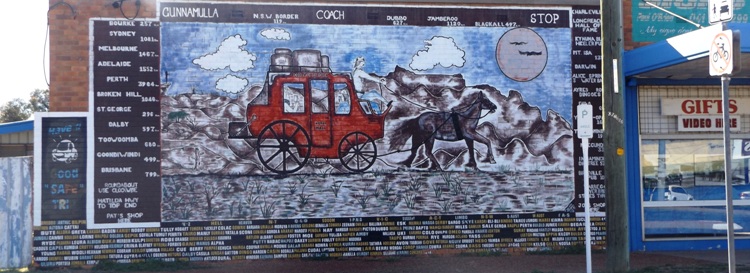
This mural depicting a Cobb and Co coach has distances listed to other key towns, then a list of many Australian towns under the picture, headed with names which needed a second glance:
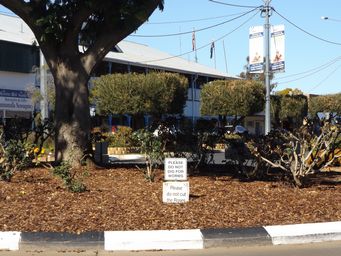
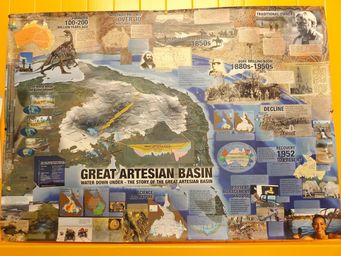
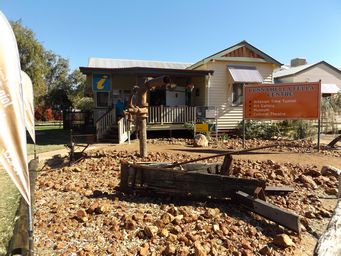
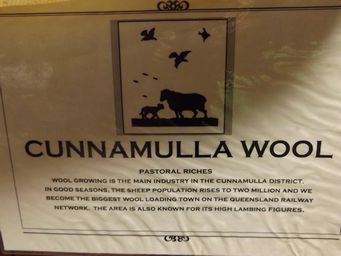
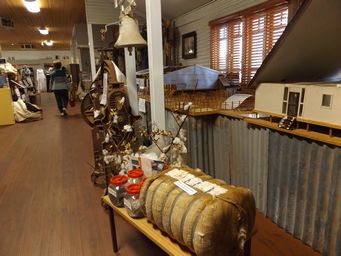
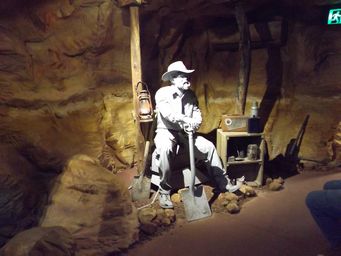
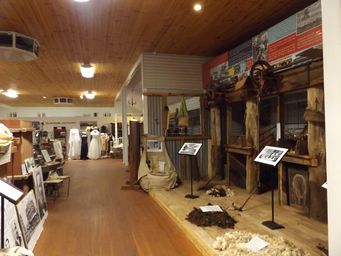
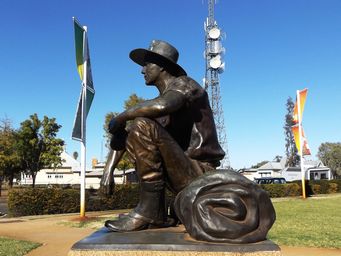
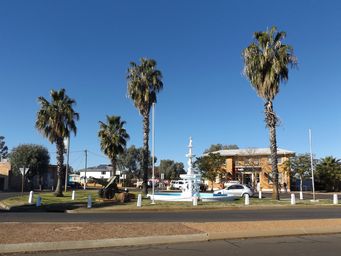
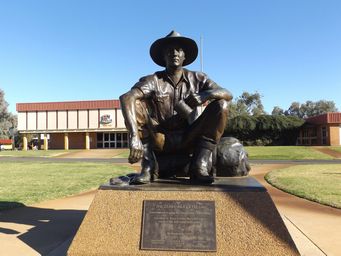
The Cunnamulla Fella is a song written by Stan Coster and sung by Slim Dusty. He is an iconic Australian Bush character. The town
of Cunnamulla has erected a statue of the Cunnamulla Fella as a tribute to Stan and Slim and to the ‘ringers’ of the bush. The statue
is double life size bronze. It was created by sculptor Archie St Clair from a drawing by Michael Nicholas. The statue is located in
front of the Paroo Shire Hall in Cunnamulla gazing across the centre of the town.
The Cunnamulla Fella Statue was unveiled on 18th November 2005 by Stan Coster’s family; Russell Coster, Jayne Kelly (Coster), and
Tracy Coster, together with Slim Dusty’s daughter Ann Kirkpatrick.
This statue was created subsequent to our first visit to Cunnamulla
(2004).
Lyrics of the song that inspired this statue, with word play on other named towns in the region which I have highlighted.
Now
I'm a scrubber, runner and a breaker too
I live on damper and wallaby stew
I've got a big cattle dog with a staghound cross
I never saw
the scrubber we couldn't toss
'Cause I'm the Feller from Cunnamulla
Yes I'm the Cunnamulla Feller
Now once when I was drovin' on
the cattle trails
I met a little girl her name was Ada Vale
I said "Marry me Ada and I'll be the feller
And we'll settle down in Augathella"
I'll
be the Feller at Augathella
Yes I'll be the Augathella Feller
Oh, she said her daddy's name was Charley Ville
She had a lot of
kiddies and a lot of bills
So I grabbed my horse that was nice and handy
And I never stopped till I reached Dirranbandi
I was the
dandy at Dirranbandi
Yes I was the Dirranbandi Dandy
Now in my moleskin trousers and my Williams boots
Aboard an outlaw as he leaves
the chutes
In my goose neck spurs I rake their fiery hide
And the girls all shouting around the ringside
Oh he's the Feller from Cunnamulla
Yeah
he's the Cunnamulla Feller
Now I've done a little fightin' in the western bars
Done a little lovin' neath the moon and stars
I
wear bright clothes and shirts full of colour
And the girls know me as that certain feller
Yes he's the Feller from Cunnamulla
Yes he's
the Cunnamulla Feller
Oh he's the Cunnamulla Feller
Yes he's the Cunnamulla Feller
Cunnamulla originated in the 1860’s as a settlement at the intersection of two major stock routes. The name of the town is derived
from an Aboriginal term meaning “long stretch of water” referring to the Warrego River, which passes through the town. With a stated
population of 1,300, the population is diminishing, and some shops and buildings look in need of attention.
Adjacent to the statue of the Cunnamulla Fella, the visitor Centre includes a museum for which a small entry fee applies. One
of the features is the Great Artesian Basin and Artesian water. The water is 100,000 years old; rather it is believed to have lain
underground for that length of time. The Great Artesian Basin covers one fifth of Australia is considered the world’s largest
underground river and is vital to those who live within its boundaries.
One of the first Artesian bores in Australia was
sunk on a station near Cunnamulla, reaching water at 500 metres and delivering the equivalent of three Olympic swimming pools daily. Due to depletion of this underground water source, bores across the country now have to be capped.
In a novel approach, take a rattly, wobbly, rickety lift ‘down’ into the time tunnel where audio and visual materials about Artesian
water and opal mining in the area give an insight into what lays beneath the ground in this region. After walking through the
tunnel, go into the Theatrette to watch a video on the Great Artesian Basin and its importance to farmers and wildlife.
When
you watch the video, your will also learn of the threat to the Great Artesian Basin water supply by the proposed Adani coal mine. The proposed Adani coal mine, which will be Australia's biggest, has been granted unlimited access to groundwater for sixty years
by the Queensland government in a move that has the potential to drain huge amounts of water from the Great Artesian Basin.
As sheep were the major industry in developing the Cunnamulla area, and there are also displays in the museum about this industry. The area once boasted large sheep numbers, so in 2004 we were surprised that we did not see sheep when driving through the area. In 2017 we saw some sheep and cattle which are still significant industries. Irrigation from the Allan Tannock Weir, which was
completed in 1991 on the Warrego River five kilometres south of the town, allows summer crops and cotton to be grown. This Weir
also provides water for the town.
Above right represents the cotton growing industry, with a model shearing shed and yard behind this part of the display.
With wide streets, gardens placed in the intersections are a feature in the centre of Cunnamulla. This one has signs saying
The fountain was erected by the citizens of the Paroo Shire in memory of those who died in service or were killed in action during
World War One. It was officially unveiled on ANZAC Day 1927. The fountain was restored and a cannon was placed at the site and
unveiled on ANZAC Day 2002.
Members of the Paroo Shire Council and the Diggers Racing Club decided on a novel memorial to fallen soldiers. It is a picturesque
fountain on the Five Ways expected to be erected in time for the Diggers Carnival in November 1926.
The Memorial Fountain is in the centre of a wide pool with four tiers rising up. Each tier is supported by detailed masonry, the most
elaborate being at the base with four griffins each embossed with an emu, kangaroo and coat of arms. Lion heads support the next tiers,
and right at the top stands a cherub balancing the top tier.
There are three caravan parks in Cunnamulla, plus a limited number of low cost sites with access to toilets and showers at Hotel Cunnamulla
($5 fee, redeemable when you make a purchase of a meal or drinks at the hotel).
The public dump point is at the Showground
(at the northern entry into Cunnamulla via the Mitchell Highway), however there is no camping at the Showground as this was closed
to casual camping in 2012. The town has a coin laundry.
Heading east, we turned onto the Balonne Highway towards St. George, much of the way a narrow strip of seal with no white line. We saw numerous kangaroos and emus, and some sheep, cattle and goats on the stations.